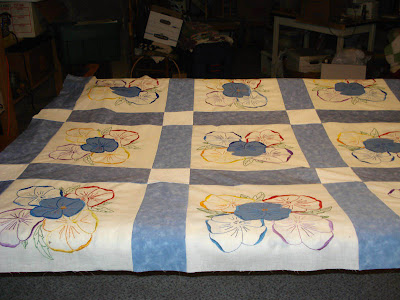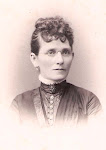I Can See Clearly Now
Jennifer Myers
Ohio
Designer and Quilt Artist
September 2011
33" x 36"
Commissioned for the Parks-Wildemuth Collection
Sue here..... sometimes I take day trips with family, one of my friends, or sometimes by myself. This one was to Iowa City, Iowa which is about an 1 1/2 to 2 hours from where I live in Illinois. Like walking, I use these trips to do some thinkin' on things.
Really good insights come to me when I am on these long drives or taking a walk in nature so I always keep a journal handy as I don't want to lose these "whispers" of inspiration.
An idea came to me that day on the drive back home...about a vision quilt. A quilt, on first glance, that would go into a Eye Doctor's office, but also reflect a deeper meaning of those defining moments we have in our life, when our entire way of thinking or "seeing" things is changed and we see the world from a whole new perspective or one could say through a different pair of eyeglasses.
I knew I was not capable of making this quilt happen so I went to someone who was capable of bringing this idea to life. Her name is Jennifer Myers of Ohio and
Art Quilts by Jen http://artquiltsbyjen.com/index.html.
I shared my idea with Jennifer and asked her if she was interested in the commission and she took it on. One or two e-mails is all we did and then I let her be to create. It is important when you commission a piece to have faith in your artist so let go of the need to control THEIR creative effort and just let them do their thing. I am a firm believer things always unfold as they are meant to be.
I Can See Clearly Now is the quilt Jennifer created. It is an original design which came directly from this creative young woman's imagination and what a creative soul she is.
In Jennifer's own words:

"At first glance, this quilt appears to be something that belongs in an eye doctor's office. But in fact, it goes much deeper than that. In reality, it is a quilt about the life changing experience of seeing things differently. About realization, understanding, and awakening.

The background of the quilt was hand painted by myself. Since purple is the color of spirituality, it is a subtle reminder of what this quilt is really about. Additionally the light source down the center of the quilt is meant to start
guiding the viewer into the deeper meaning of this quilt. The light is on, look harder!! The light also represents the way we see things in a new light and gain new understanding.
The eyeballs throughout the quilt were drawn myself in an art class back in 1998. I discovered them while searching for the ideas for this quilt and realized that they would be perfect. They represent all of the different ways we can see things and come to new understanding. The eyeballs were
laser printed on the fabric. The word puzzle contains 22 words that reflect seeing, discovery, and life changing events. Here is a listing of the words you will find in the puzzle: baby blues, peeper, ocular, see, view, enlighten, wiser, stronger, smarter, reform, awaken, find, discover, detect, observer, notice, realize, visualize, experience, crystal clear, reconsider, life changing.
As you inspect the central part of the quilt, hopefully your eye will catch the stars glowing on the outer corners of the quilt. Since this is a study in seeing things differently, there are actually 4 constellations set into these two clusters of stars. You should be able to locate the big dipper, the little dipper, Orion and Sagittarius. The constellation represents the way we need to put pieces of information together to get the whole picture.
Finally, after your eye discovers the constellations, maybe new understanding will come, as you notice the "handwriting on the wall" beneath the constellations. I found many quotes by famous people about seeing and vision, and decided that they would be perfect to secure ones understanding of the work...if you have gotten far enough to notice. The purpose of this quilt is to bring the viewer below the surface. Hopefully all who view this quilt will "see" the vision!!"
***********************

Meaning of the Eagle Motif
Jennifer put in the eagle motif (eagle with the tear) in this piece for me because she knows I collect eagle quilts. To me, it also represents the idea of the "eagle eye" which is defined in the dictionary as 1. Keen eyesight, 2. The ability or tendency to observe closely or pay attention to detail, and 3. One that observes with close attention. The eagle with the tear in his eye also reflects how we feel about "change" or "transformation" in our life. Here is a quote that says it better than I can, "When one door closes, another opens; but we often look so long and so regretfully upon the closed door that we do not SEE the one which has opened for us.”
Well done Jennifer, really well done!!!













 February 9, 1935
February 9, 1935





